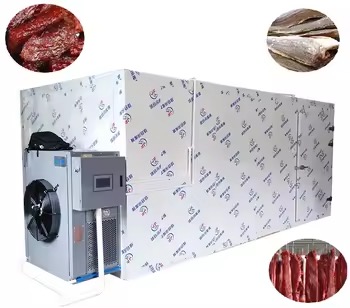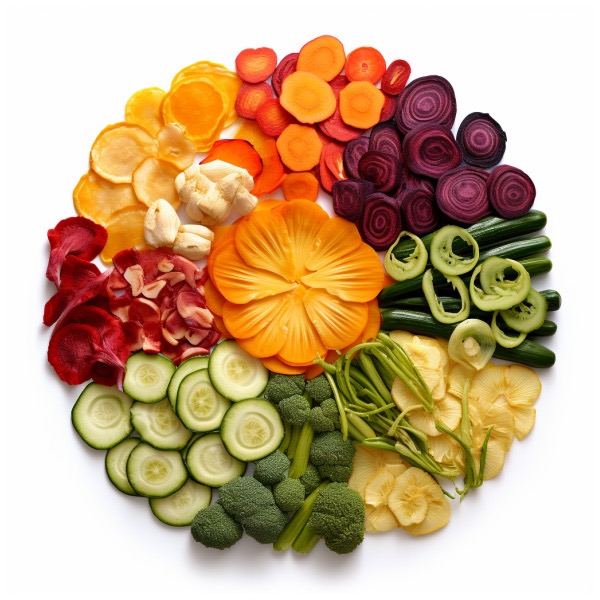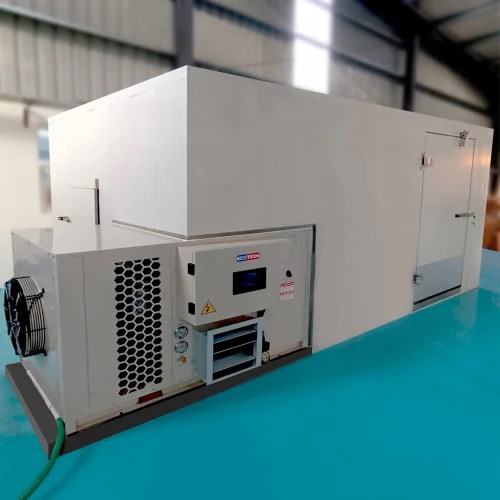
Content Menu
● Introduction
● Understanding Room Type Drying Machines
>> What Are Room Type Drying Machines?
>> How Do Room Type Drying Machines Work?
● Types of Room Type Drying Machines
>> 1. Batch Type Fruits and Vegetable Dryer
>> 2. Small Single Door Tray Type Food Dehydrator
>> 3. Large Industrial Food Dehydrator Machine
>> 4. Conveyor Mesh Belt Industrial Food Dryer
>> 5. Continuous Potato Chips Dryer
● Benefits of Room Type Drying Machines
>> 1. Cost Savings
>> 2. Nutrient Preservation
>> 3. Enhanced Flavor
>> 4. Extended Shelf Life
>> 5. Convenience and Versatility
● Applications of Room Type Drying Machines
>> Food Preservation
>> Health and Wellness
>> Culinary Arts
>> Commercial Food Production
● Advanced Features of Modern Room Type Drying Machines
>> Digital Control Panels
>> Automatic Shut-Off
>> Multiple Tray Layers
● Choosing the Right Room Type Drying Machine
>> Capacity
>> Temperature Range
>> Energy Efficiency
>> Construction Material
● Operating Tips for Room Type Drying Machines
>> Preparation
>> Temperature Control
>> Tray Rotation
>> Proper Storage
● Environmental Impact of Room Type Drying Machines
● Innovations in Room Type Drying Technology
>> Smart Connectivity
>> Humidity Sensors
>> UV Sterilization
>> Energy Recovery Systems
● The Future of Room Type Drying Machines
>> Artificial Intelligence Integration
>> Sustainable Materials
>> Hybrid Drying Technologies
● Global Market Trends for Room Type Drying Machines
>> Increasing Demand for Healthy Snacks
>> Growing Food Processing Industry
>> Focus on Food Security
● Conclusion
● Frequently Asked Questions
>> 1. What types of food can be dried in a room type drying machine?
>> 2. How long does it take to dry food in a room type drying machine?
>> 3. Are room type drying machines energy-efficient?
>> 4. How do I clean and maintain a room type drying machine?
>> 5. Can room type drying machines be used for commercial food production?
Introduction
Room type drying machines, also known as food dehydrators, have become essential equipment in the food processing industry. These innovative devices offer a range of benefits, from extending shelf life to preserving nutrients and enhancing flavors. As a leading Chinese manufacturer of food drying machines, we provide OEM services to international food dehydrator brands, wholesalers, and producers. In this comprehensive guide, we'll explore everything you need to know about room type drying machines, their applications, and why they're revolutionizing food preservation.

Understanding Room Type Drying Machines
What Are Room Type Drying Machines?
Room type drying machines are specialized appliances designed to remove moisture from various types of food. They work by circulating warm air around the food, gradually reducing its water content without cooking it. This process preserves the food, extending its shelf life while retaining essential nutrients and flavors.
How Do Room Type Drying Machines Work?
Food drying machines operate on a simple principle:
1. A heating element provides warm air
2. A fan circulates the air throughout the drying chamber
3. Food is placed on trays inside the chamber
4. The warm air removes moisture from the food over time
Types of Room Type Drying Machines
There are several types of room type drying machines available, each suited for different scales of operation and specific food types:
1. Batch Type Fruits and Vegetable Dryer
- Capacity: 150 to 300 kg per batch
- Features: Automatic operation, 48 trays
- Power requirement: 8 kW
2. Small Single Door Tray Type Food Dehydrator
- Capacity: 80 kg per batch
- Features: High-temperature resistant axial flow fan
- Power requirement: 9 kW
3. Large Industrial Food Dehydrator Machine
- Capacity: 350 kg per batch
- Features: 96 or 144 trays
- Power requirement: 20 kW
4. Conveyor Mesh Belt Industrial Food Dryer
- Suitable for large-scale, continuous production
- Customizable to meet specific production needs
5. Continuous Potato Chips Dryer
- Designed for continuous drying of potato chips
- Can also remove excess oil from fried chips
Benefits of Room Type Drying Machines
Investing in a room type drying machine offers numerous advantages for food processors and manufacturers:
1. Cost Savings
By allowing bulk purchases of fruits and vegetables for preservation, room type drying machines can significantly reduce food costs. Dried foods are often less expensive than their fresh counterparts, making them a budget-friendly option for both producers and consumers.
2. Nutrient Preservation
Unlike other preservation methods such as freezing or canning, food drying machines preserve a higher percentage of the food's nutritional content. Dried fruits like raisins and apricots retain their rich antioxidants and minerals.
3. Enhanced Flavor
The drying process amplifies the natural sweetness and intensifies the aroma of fruits and vegetables, making them delicious additions to various recipes.
4. Extended Shelf Life
While fresh fruits typically last only a few days to a week, dried fruits can be stored for up to a year, allowing for better inventory management and reduced waste.
5. Convenience and Versatility
Room type drying machines are easy to use and versatile. Once set, they work independently, allowing operators to focus on other tasks.

Applications of Room Type Drying Machines
Room type drying machines find applications across various industries:
Food Preservation
The primary use of these machines is to extend the shelf life of fruits, vegetables, and meats. By removing moisture, they prevent the growth of bacteria and mold, keeping food safe for consumption for longer periods.
Health and Wellness
Health-conscious consumers appreciate dried foods as they preserve nutrients without the need for additives often found in commercially dried products.
Culinary Arts
Chefs and food manufacturers use dried ingredients to enhance flavors and textures in a wide range of recipes, from snacks to gourmet dishes.
Commercial Food Production
In the commercial sector, room type drying machines play a crucial role in food security by extending shelf life and preventing spoilage. They are indispensable in the food supply chain, ensuring consistent quality and availability of dried products.
Advanced Features of Modern Room Type Drying Machines
Today's room type drying machines come equipped with advanced features that enhance their functionality and efficiency:
Digital Control Panels
Modern machines feature digital control panels that allow for precise temperature and time settings, ensuring optimal drying conditions for different types of food.
Automatic Shut-Off
This safety feature turns off the machine once the drying cycle is complete, preventing over-drying and conserving energy.
Multiple Tray Layers
Increased capacity without increasing floor space is achieved through multiple tray layers, allowing for more efficient use of space in production facilities.
Choosing the Right Room Type Drying Machine
When selecting a room type drying machine, consider the following factors:
Capacity
Determine the volume of food you need to dry regularly. This will help you choose between smaller models for home use or larger industrial machines for commercial production.
Temperature Range
Different foods require different drying temperatures. Ensure the machine you choose offers a suitable temperature range for the types of food you plan to dry.
Energy Efficiency
Look for models that offer efficient energy use to minimize operational costs, especially for large-scale production.
Construction Material
Opt for machines made from food-grade materials like stainless steel for easy cleaning and durability.
Operating Tips for Room Type Drying Machines
To get the best results from your room type drying machine, follow these tips:
Preparation
Slice fruits and vegetables thinly and evenly for consistent drying. Remove any blemishes or overripe portions.
Temperature Control
Adjust the temperature based on the type of food being dried. Delicate herbs require lower temperatures, while tougher vegetables can withstand higher heat.
Tray Rotation
In stacking models, rotate trays periodically to ensure uniform drying across all layers.
Proper Storage
Once dried, store foods in airtight containers in a cool, dark place to maintain quality and extend shelf life.
Environmental Impact of Room Type Drying Machines
Room type drying machines can have a positive environmental impact:
- Reduce food waste by preserving excess produce
- Decrease the need for refrigeration, saving energy
- Promote sustainable food practices by allowing consumers to preserve seasonal produce
Innovations in Room Type Drying Technology
The field of food dehydration is constantly evolving, with new technologies emerging to improve efficiency and product quality:
Smart Connectivity
Some modern room type drying machines now come with Wi-Fi connectivity, allowing users to monitor and control the drying process remotely through smartphone apps.
Humidity Sensors
Advanced models incorporate humidity sensors to automatically adjust drying times based on the moisture content of the food, ensuring optimal results.
UV Sterilization
UV light technology is being integrated into some drying machines to provide an additional layer of food safety by eliminating harmful bacteria during the drying process.
Energy Recovery Systems
Innovative energy recovery systems are being developed to capture and reuse heat from the drying process, significantly improving energy efficiency.
The Future of Room Type Drying Machines
As technology continues to advance, we can expect to see further improvements in room type drying machines:
Artificial Intelligence Integration
AI-powered systems may soon be able to recognize different food types and automatically adjust drying parameters for optimal results.
Sustainable Materials
Manufacturers are exploring the use of eco-friendly and recyclable materials in the construction of drying machines to reduce environmental impact.
Hybrid Drying Technologies
Combining different drying methods, such as infrared and convection drying, could lead to more efficient and versatile machines capable of handling a wider range of food products.
Global Market Trends for Room Type Drying Machines
The global market for room type drying machines is experiencing significant growth, driven by several factors:
Increasing Demand for Healthy Snacks
As consumers seek healthier snack options, the demand for dried fruits and vegetables is rising, boosting the need for efficient drying technologies.
Growing Food Processing Industry
The expansion of the food processing industry, particularly in developing countries, is creating new opportunities for room type drying machine manufacturers.
Focus on Food Security
With growing concerns about food security and waste reduction, governments and organizations are investing in food preservation technologies, including drying machines.
Conclusion
Room type drying machines are revolutionizing food preservation and processing. From small-scale home use to large industrial applications, these versatile machines offer numerous benefits including cost savings, nutrient preservation, enhanced flavors, and extended shelf life. As technology advances, we can expect even more efficient and feature-rich models to enter the market, further improving the food drying process.
For food manufacturers, wholesalers, and brands looking to expand their product lines or improve their production processes, investing in high-quality room type drying machines is a smart decision. With the right equipment, you can meet the growing demand for healthy, convenient, and long-lasting food products while maintaining the highest standards of quality and nutrition.
As we look to the future, room type drying machines will continue to play a crucial role in addressing global challenges such as food waste reduction and improving food security. By embracing these technologies and staying abreast of the latest innovations, businesses in the food industry can position themselves for success in an increasingly competitive and sustainability-focused market.

Frequently Asked Questions
1. What types of food can be dried in a room type drying machine?
Room type drying machines are incredibly versatile and can be used to dry a wide variety of foods. This includes:
- Fruits: apples, bananas, berries, mangoes, etc.
- Vegetables: carrots, onions, peppers, tomatoes, etc.
- Herbs: basil, oregano, parsley, thyme, etc.
- Meats: beef jerky, chicken, fish, etc.
- Grains and legumes: corn, soybeans, etc.
The key is to prepare the food properly by slicing it evenly and removing any inedible parts before drying.
2. How long does it take to dry food in a room type drying machine?
The drying time can vary significantly depending on several factors:
- Type of food being dried
- Thickness of the slices
- Initial moisture content
- Desired final moisture content
- Temperature setting of the machine
- Humidity of the surrounding environment
On average, fruits and vegetables can take anywhere from 6 to 16 hours to dry completely. Meats may take longer, often 12 to 24 hours. It's important to check the food periodically during the drying process to ensure it reaches the desired level of dryness without over-drying.
3. Are room type drying machines energy-efficient?
Yes, room type drying machines are generally more energy-efficient compared to other methods of food preservation, such as freezing or canning. Most modern food dehydrators are designed to use energy efficiently, with many models consuming between 300 to 1000 watts of power, depending on their size and capacity.
For example, a 500-watt dehydrator running for 10 hours would use 5 kWh of electricity. This is significantly less than what a typical freezer or refrigerator would use over the same period to preserve an equivalent amount of food. Additionally, some high-end models come with energy-saving features like automatic shut-off timers, further improving their efficiency.
4. How do I clean and maintain a room type drying machine?
Proper cleaning and maintenance of your room type drying machine are crucial for ensuring its longevity and maintaining food safety. Here are some general guidelines:
1. Unplug the machine and allow it to cool completely before cleaning.
2. Remove the trays and wash them with warm, soapy water. Most trays are dishwasher safe, but check the manufacturer's instructions.
3. Wipe down the interior of the machine with a damp cloth. For stubborn residues, use a mild detergent solution.
4. Clean the fan and heating element area with a soft brush or vacuum to remove any dust or debris.
5. Dry all parts thoroughly before reassembling the machine.
6. Regularly check and clean the air filters if your model has them.
7. Store the machine in a clean, dry place when not in use.
Always refer to your specific model's user manual for detailed cleaning instructions, as procedures may vary between different machines.
5. Can room type drying machines be used for commercial food production?
Absolutely! Room type drying machines are widely used in commercial food production. There are industrial-grade models designed specifically for large-scale operations. These machines offer higher capacities, more precise temperature and humidity controls, and often come with features tailored for commercial use, such as:
- Continuous operation capabilities
- Multiple drying chambers for different food types
- Advanced monitoring and control systems
- Compliance with food safety regulations
For commercial applications, it's important to choose a machine that meets your production volume needs and complies with relevant food safety standards in your region. Many manufacturers offer customizable solutions to meet specific commercial requirements.











